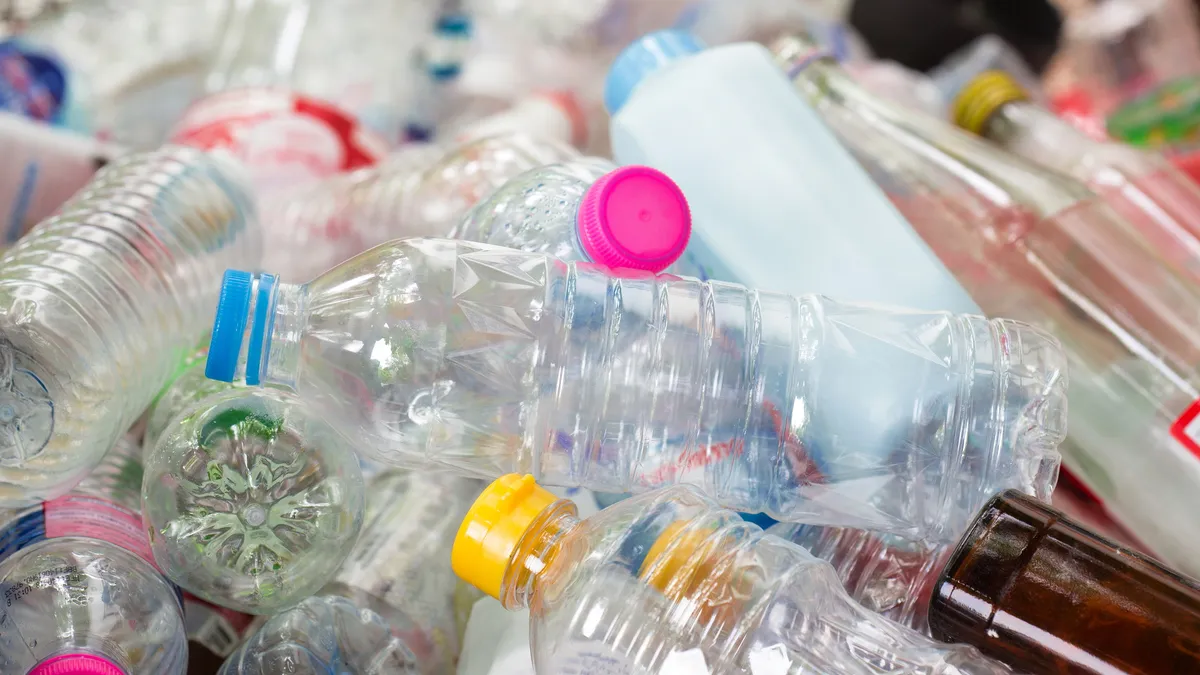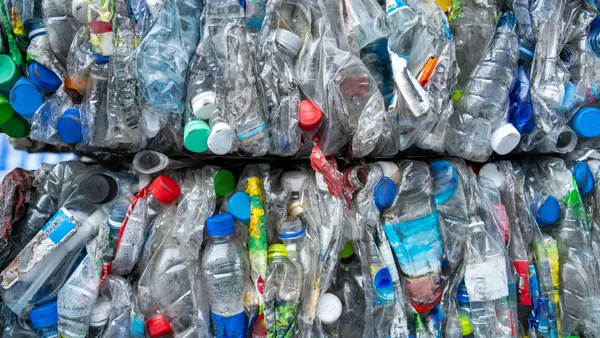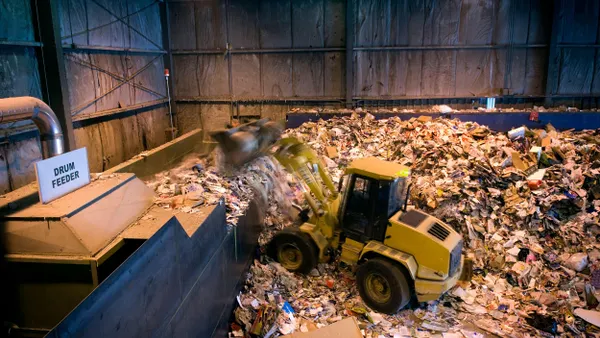Improving recycling access for multifamily buildings, enacting extended producer responsibility laws and investing in recycling at a local level are the best steps forward to increase the U.S. residential recycling rate, according to a recent report from The Recycling Partnership.
The residential recycling rate is about 21%, according to TRP data. Recyclable material mostly ends up in landfills because of lack of access to recycling services and education, as well as “insufficient communication,” the report said.
The report found that “every material type is under-recycled,” with seven out of 10 cardboard boxes, three out of four milk jugs and seven out of 10 glass containers, aluminum cans and PET bottles put in the trash, the report said.
Tackling multifamily recycling hurdles has long been a challenge in the industry, but the disparities between single and multi-family access are clear, said Scott Mouw, TRP’s senior advisor of strategy and research. About 85% of single-family homes have recycling access, but only 37% of multifamily homes do, according to the report.
Local governments have made strides to reverse this trend by enacting multifamily recycling ordinances in places like Austin, Texas, and Orlando, Florida. Orlando enacted its ordinance in 2019, requiring recycling across the city’s 75,000 multifamily residential units. TRP provided several grants to help support the change, Mouw said.
“They are a really good showcase for what happens when you not only just pass the ordinance, but really implement it in an intelligent way,” he said. “That’s a bit of a call to action to all the other cities in the United States: Look what can be done.”
Education is still an important piece of the puzzle, he added. About 59% of all residents who have recycling access actually use the service, and they put about 57% of recyclable materials in the recycling bin, the report said. Overall, 76% of residential recyclables are “lost at the household level.”
MRFs also have important roles to play in raising recycling rates “and expanding the pie of what is recyclable at the local level,” Mouw said. TRP estimates MRFs are sorting and processing about 87% of the recyclable materials they receive, and further improvements could boost that to 95%, according to the report.
“The greatest opportunities for improvement in MRF efficiency are in the processing of materials that are somewhat newer to the recycling stream, but innovative technologies are greatly enhancing the ability of MRFs to sort and process these newer materials,” the report states. Overall, MRFs process about 90% of cardboard, 85% of PET bottles, 93% of HDPE bottles and 90% of aluminum cans they receive, the report states.
TRP advocates for EPR laws as another way to “foster substantial leaps forward in recycling rates, even in states that are relatively strong performers already,” the report states. EPR laws have already passed in four states: Colorado, California, Oregon and Maine.
EPR laws vary slightly from state to state, but each has a powerful opportunity to help increase recycling rates, boost MRF improvements and connect more people to reliable recycling systems, Mouw said. Oregon’s law, for example, includes MRF capture rate rules, which Mouw sees as a “strong pathway to the improvement of MRF functions.” Meanwhile Colorado’s new EPR law includes sections devoted to expanding recycling access.
Though TRP sees EPR as a powerful policy tool, such laws can take years to pass and implement. “We talk a lot about EPR, but we definitely recognize that the deposit return systems are important, too,” as well as policies supporting recycled content and recycling access, he added.
There’s also room for private industry to get more involved, especially by designing packaging that can be recycled. Brands can invest in recycling and collection infrastructure as well, the report concludes.











